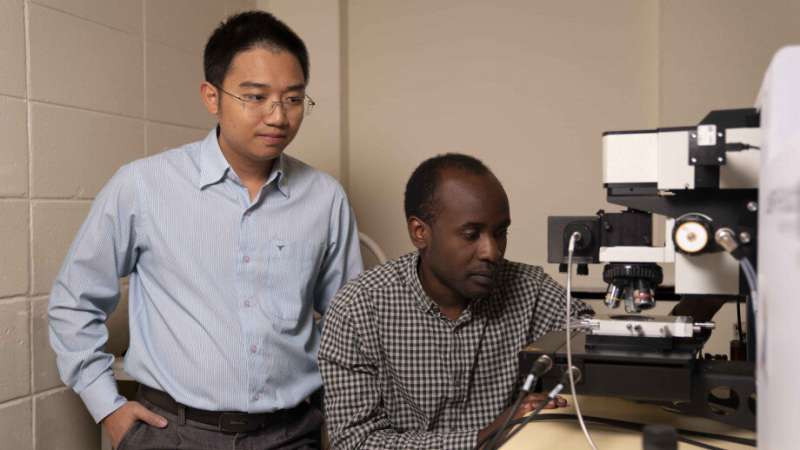Scientists unlock the potential of ultra-thin 2-D materials

Scientists from The Australian National University (ANU) have, for the first time, demonstrated the maximum potential of ultra-thin 2-D materials to generate electricity using sunlight.
2-D materials could one day revolutionise technology like solar cells, mobile phones and sensing devices.
While scientists have been researching these materials for some time, their potential for applications such as solar cells and light detectors has been difficult to quantify.
The research team, led by Dr. Hieu Nguyen, used an innovative approach to show the maximum voltage achievable through light absorption for the single-atom-thin materials.
"These monolayers are hundreds of thousands times thinner than a human hair. If they were coated on your car windows, cell phone screen, or even your watch, you would barely see them," Dr. Nguyen said.
"One day a car window or a cell phone screen could harvest sunlight to help power itself."
The ANU researchers used sticky tape and a spectroscopic microscope to calculate the technology's maximum potential.
"We started with a big material and just used the tape to 'exfoliate' layer by layer, until only a single layer of atoms remained," Ph.D. candidate Mike Tebyetekerwa said.
"This gives us the most pristine form of the material, allowing us to truly understand its real potential."
The team then studied the light emitted from the various materials using a microscope equipped with a sensitive camera and detector.
"This way we can just 'look' at the materials, and predict their potential performance based on the properties of the detected light," Mr Tebyetekerwa said.
The results show ultra-thin, extremely lightweight, transparent monolayers should be suitable for high-voltage solar cells.
According to Dr. Nguyen, they could provide a voltage of more than 1V—as powerful as established solar technologies.
"This is important as it gives scientists a target to work towards in terms of electrical output. We cross-validated our calculations using other bulk semiconductor materials," Dr. Nguyen said.
"It is exciting that something almost invisible to the naked eye can still absorb sunlight and efficiently convert it into electricity."
More information: Mike Tebyetekerwa et al. Quantifying Quasi‐Fermi Level Splitting and Mapping its Heterogeneity in Atomically Thin Transition Metal Dichalcogenides, Advanced Materials (2019). DOI: 10.1002/adma.201900522
Journal information: Advanced Materials
Provided by Australian National University




















